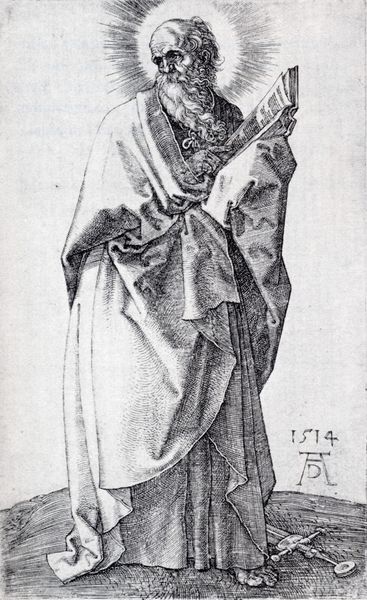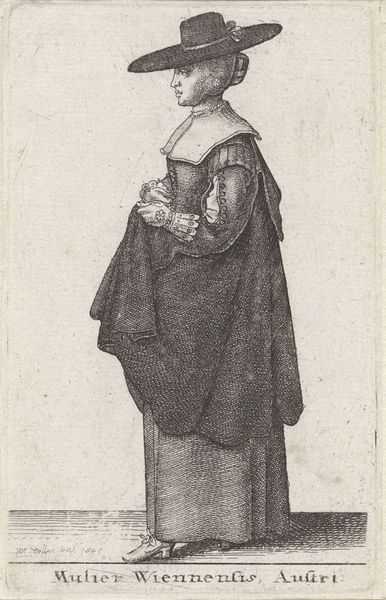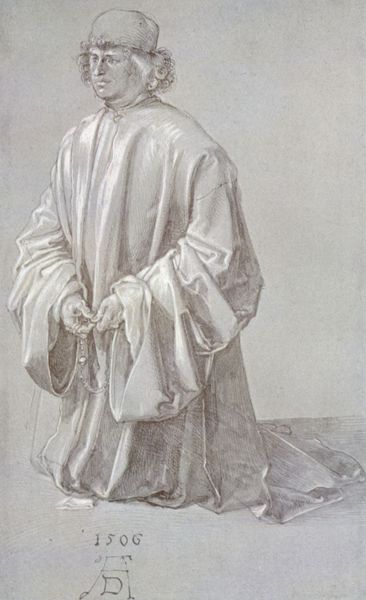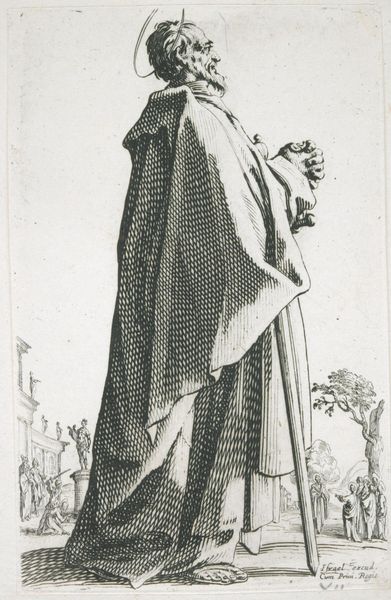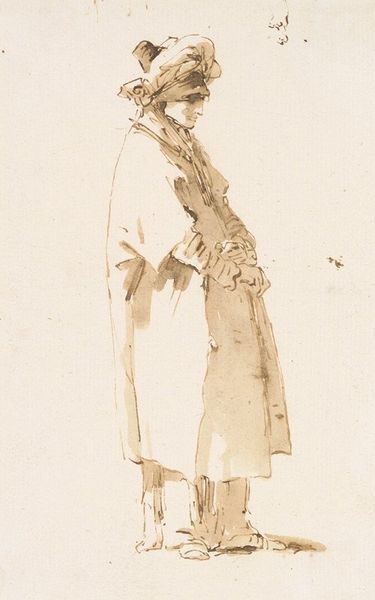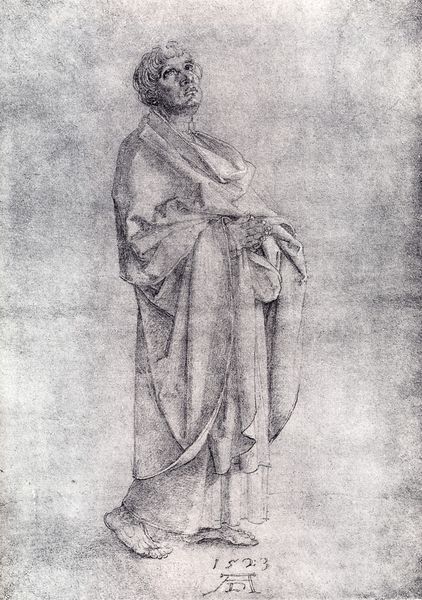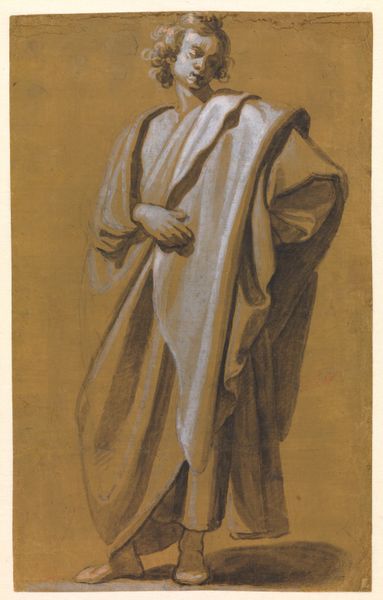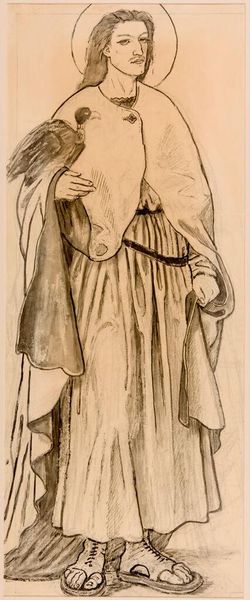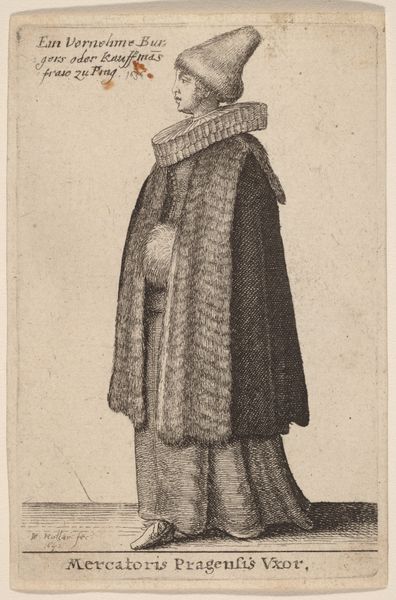
drawing, pencil, charcoal
#
portrait
#
drawing
#
pencil sketch
#
charcoal drawing
#
figuration
#
pencil drawing
#
romanticism
#
pencil
#
charcoal
Copyright: Public domain
Curator: This drawing, known as "Woman in a Cloak," is attributed to Caspar David Friedrich, rendered with pencil and charcoal. Editor: My first impression is one of quiet dignity, perhaps tinged with melancholy. The back view immediately prompts a sense of introspection, as if she’s lost in thought, or observing something unseen by us. Curator: Yes, that contemplative pose is characteristic of Friedrich. Looking at the symbols, the cloak itself is quite interesting; it is enshrouding and suggests concealment, perhaps a wish to withdraw from the world. Notice how the intricate lines create depth, and how the drape of the fabric almost has a life of its own, flowing to both protect and hide. Editor: Absolutely, and considering the political climate in Germany during Friedrich’s time, there's the possibility of the cloak functioning as a form of quiet protest. It's as though the act of turning away is a subtle commentary on societal pressures and expectations, even oppression, common after the Napoleonic wars. Curator: That brings up a good point, given his history with nationalistic imagery. Perhaps it represents the weight of tradition or societal roles. The high, intricate hairstyle further suggests this confinement, acting as a physical barrier alongside her very human form. What appears ornamental and dignified on the surface, perhaps points to internal restriction. Editor: It also speaks to the growing tension between public expectation and the rise of personal subjectivity in the Romantic era. Friedrich really nails that struggle, doesn’t he? The portrait itself is stark, and she may symbolize this new shift. It certainly makes me consider the role women occupied within the Romantic imagination, confined within defined social and cultural spheres. Curator: That's so relevant, particularly as Romanticism emphasized personal experience. With Friedrich you often get figures poised at the intersection of nature and the self. With that in mind, it causes one to ponder what 'landscape' this woman faces and to what personal extent is she affected. Editor: Seeing her, wrapped in symbolism of protection and melancholy, makes me consider what future awaited her, and others who occupied similar social position and emotional space, as Romanticism progressed and the Victorian era took hold. Curator: A really lovely note to conclude with. I completely agree and this intimate portrait continues to be psychologically captivating and a window to Romantic artistic representation.
Comments
No comments
Be the first to comment and join the conversation on the ultimate creative platform.

